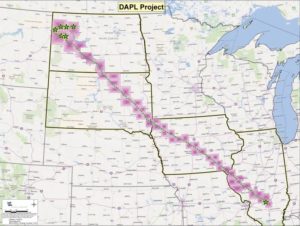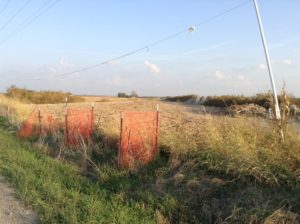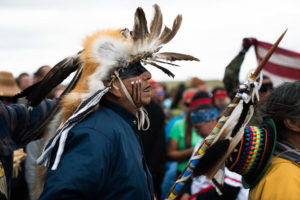Written and Media by Leanna Westerhof.
The DAPL (Dakota Access Pipeline) is a $3.7 billion investment surrounded by controversy. It’s expected to be fully functional at the end of 2016. It will carry 470,000 barrels of crude oil a day and transport oil from the Bakken region in N.D. to Patoka, Ill.

The amount of oil coming out of the Bakken region in N.D. has caused transportation strains in the area. This includes a lack of rail cars to transport grain, causing an increase in the price of tariffs on the rail cars from $50 to about $1,400 per car.
The Bakken region is in N.D, Mont., and part of Canada. It’s a natural deposit of oil and natural gas and is a mix of black shale, sandstone, and siltstone that was originally thought to be a minimal oil deposit. However, thanks to horizontal drilling and hydrofracturing, it has become a rich bed for oil. N.D. is the number two producer of oil in the United States because of it.
Energy Transfer Partners is the company constructing this pipeline. Construction will create 8,000 to 12,000 jobs and positively impact the local economies of towns it goes through. It will generate around $55 million annually in property taxes in every state it passes through. America is supposed to gain greater energy independence from this pipeline instead of relying on foreign imports. We are the number one consumer of crude oil in the world but only the third largest producer of crude oil.

The Standing Rock Sioux Tribe is protesting because the pipeline is going through some of their sacred ancestral burial sites. It runs half a mile away from their reservation but will run underneath the Missouri River, which is the tribes only source of water. The tribe filed an injunction against the pipeline saying the U.S. Army Corps of Engineers did not give them enough notice before construction according to the treaty.
For months, thousands of protesters have camped out in N.D. There have been many arrests. Despite the protestors and treaty, the District Court of Appeals ruled in favor of the pipeline and construction was to resume Tuesday, Oct. 25, however,
That afternoon, a federal judge in Washington, D.C., ruled against a request by the Standing Rock Sioux to stop construction. The judge, James E. Boasberg, said the tribe had been given ample opportunity to express its views during the permitting process and that it had not shown it would be sufficiently harmed by the pipeline.
Yet minutes later, in an unusual move, the Obama administration announced that it was asking Energy Transfer Partners to halt construction in areas near Lake Oahe controlled by the Army Corps of Engineers while the corps reviewed its permitting decisions in those areas.”

There are two kinds of protests happening: an environmental protest and the treatment of Native Americans by the United States. Native Americans have been oppressed since the first immigrants arrived on their soil. Mass incarceration, poverty, poor housing, unemployment and sexual abuse are only a few of the problems they face today.
This protest is about Native Americans being heard and respected. It’s about their land being taken from them and used for something they don’t support. The question is, will the United States listen?




























